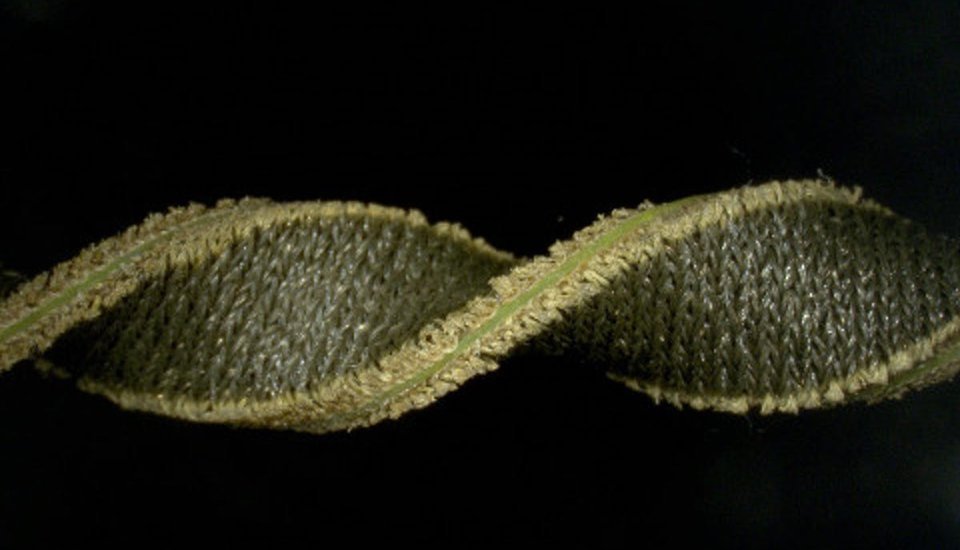Computerized Fabric Could Transform Any Piece of Clothing Into a Fitness Tracker

Counting your steps used to be an activity restricted to OCD sufferers, but with the advent of smart phones and fitness trackers, it's easy to keep track of precisely how many strides you take in a week, or a day, or an hour.
New technology out of Harvard promises to make this kind of tracking even more accurate and ubiquitous. A team of researchers at Harvard's Wyss Institute for Biologically Inspired Engineering have developed a stretchy fabric-based sensor that can detect and transmit data on a wide range of human movement. The highly sensitive capacitor technology could be incorporated into the next generation of smart apparel, in which your clothing doubles as a digital device.
Put another way: Your shirt could be your next computer.
Working with colleagues at Harvard's School of Engineering and Applied Sciences, the research team set out to find a replacement for the hard and inflexible materials used in most wearable computing systems today — think fitness bands, clip-on pedometers, etc. By incorporating computing elements into the fabric itself, the researchers hope to kick start a whole new class of light, flexible, and truly wearable computing systems.
The Harvard technology consists of a thin sheet of silicone sandwiched between two layers of conductive fabric, creating what's known as a capacitive sensor. This kind of sensor can track even the slightest movement by constantly monitoring tiny electrical charges as they travel through the material.
"When we apply strain by pulling on the sensor from the ends, the silicone layer gets thinner and the conductive fabric layers get closer together, which changes the capacitance of the sensor in a way that's proportional to the amount of strain applied,” said co-author Daniel Vogt, in a statement announcing the new research. "We can measure how much the sensor is changing shape."
The material is sensitive enough to register physical strain of less than half a millimeter. According to testing on a pair of gloves made from the material, that level of sensitivity is good enough to measure fine motor movements like slightly moving one finger side-to-side. But the material is so light and flexible that such movements are entirely unimpeded.
Get the world’s most fascinating discoveries delivered straight to your inbox.
The new process is also easy to set up and duplicate, making it immediately useful for manufacturers of smart apparel and other wearables.
"We have designed a unique batch-manufacturing process that allows us to create custom-shaped sensors that share uniform properties, making it possible to quickly fabricate them for a given application," said researcher Asli Atalay in an email.
The National Science Foundation, the Scientific and Technological Research Council of Turkey, and the US Department of Defense provided research support.
RELATED: This Sports Bra Checks Your Heart Rate and Recharges as You Move
The paper, published in the journal Advanced Materials Technologies, is only a preliminary proof-of-concept study, but the research team is optimistic that the textile technology could be used for motion capture applications — athletic clothing that tracks physical performance or soft clinical devices to monitor patients in a medical setting.
"This work shows promising results for human motion monitoring in sports, for performance optimization, or training purposes," Atalay said. "For example, a golfer who wears sensor integrated clothing can train himself on correct posture, or an athlete can optimize his performance by learning from sensor feedback."
Another possibility: By combining the sensor material with fabric-based soft actuators, engineers could develop robotic systems that truly mimic apparel. In other words, instead of simply tracking movement, the material itself could assist or even initiate specific movements, leading to soft exoskeleton systems for physical labor or disabled patients.
"There is a growing interest in utilizing textile technology in soft robotic systems," Atalay said. "For example, the Wyss Institute develops fabric-based assistive robots to help people with physical impairments such as spinal cord injury or ALS. Another example is monitoring breath rate with sensors integrated into garments to prevent sleep apnea."
Original article on Seeker.


